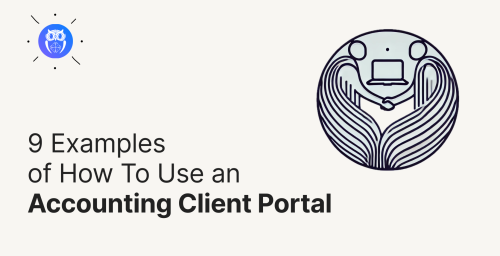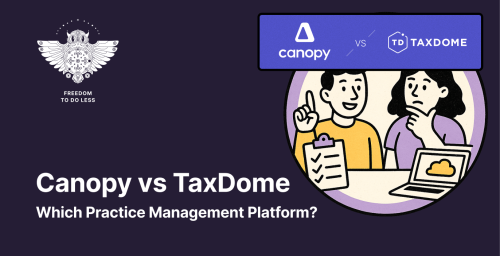Tracking time for work tasks is one of the best ways to grow a business. This overviews employees’ time on specific tasks, clients, and processes. Yet, there is a great deal of prejudice involved. We asked accountants how they feel about tracking time for work tasks, and the answers were quite similar.
So, we researched and then put together the most common myths about work time tracking. It’s time to debunk the misconceptions many business owners and employees have developed.
Myth: It’s not important to track working time with fixed pricing
Why can tracking time be valuable even if the service is at a fixed price?
You need to know the costs to charge for the service. If the workload has increased over time or the price was too low initially, you may be doing free work for clients. Thanks to time tracking, you can know the actual time consumed, and you can set a fair fixed price for the service.
Tracking work time gives a good overview of service profitability
Do you know what the most profitable service in your accounting firm is?
You can make fact-based decisions about what your most profitable accounting service is based on time-tracking data.
Once you know the profit margin of accounting service, adjust the price accordingly and focus on the most profitable.
When tracking time for work tasks, you can quickly identify additional work. Often, your accounting client may need extra services that are not agreed upon in the fixed plan. Once these additional tasks are documented, you can easily present evidence of the extra work with the invoice.
Now comes the struggle of how to unproblematically let your client know that they need to start paying extra for the additional services. We’ve conducted 11 email templates made for accountants to ease the pain for you.
Work time tracking with fixed pricing gives you the needed information to plan work better
Time tracking data gives everyone—employees and management—a good overview of workload and time spent on clients or tasks. If a new client or employee joins the company, the management board has a thorough overview of the current duties and time spent on them, and it is easy to share work or clients between employees.
When time tracking with comprehensive software with analytic features, the business analytics report also shows if the client’s workload gradually increases. As the volume of work increases, hiring new employees or redistributing tasks may be necessary to avoid overburdening employees.
Based on time, finding and solving problems is easy.
Suppose you have two clients of the same size, but one takes double the employee’s time. Let’s outline two options for the problem and how tracking time can solve them.
Option 1
Based on time data, communicating with one of the clients takes longer. Why has such a situation occurred? The client does not send documents on time, and the accountant must send several reminders.
There are two solutions:
1) Raise the price of the service according to the time spent.
2) Set up automatic reminders to reduce manual email sending.
Option 2
It takes much more time to enter one client’s documents. Why? A beginner employee is serving the client. Instead of entering documents monthly like experienced accountants, they have done so every other day. Knowing this, the supervisor can give the new employee tips and avoid the problem the next time a new employee starts working.
Myth: Tracking time is too frustrating
The main negative points pointed out when tracking time:
- Tracking time does not bring me closer to achieving my goals.
- I feel like I’m being micromanaged.
- My boss wants to check on me.
- It is time-consuming.
These feelings may occur if the purpose of tracking time is not sufficiently explained.
Let’s point out a few points that favour tracking time.
Tracking working time creates a clear overview of the workload.
A report showing the data collected displays when the workload has increased. It’s the quickest way to see if someone is overwhelmed and tasks need to be reorganized.
Time-tracking data will help create a realistic timetable for allocating tasks in the future.
A simple task can be more time-consuming than first thought. Problems arise if you have already agreed on a schedule with a client and they don’t coincide with reality. Once you have concluded the previous statistics, the new project can consciously consider the time nuances.
Tracking time allows flexible working hours and remote working.
Employees don’t have to sit in the office from nine to five when completing their tasks. You can show you can do work tasks remotely by tracking the time.
It allows you to show your progress at work and justify the need for promotion.
Asking for a promotion can be a difficult conversation to prepare for and initiate. If time-tracking data is available, you can show the management an overview of your contribution to the company. This way, it’s also easy to compare the volume of work with other employees if necessary.
Tracking time contributes to productivity.
You can see how the tasks are distributed during the day by analysing your typical workday. With the help of the overview, you can organize your tasks so that everything you want to achieve in one day is possible.
Myth: Work time tracking data can be easily manipulated
In a perfect world, all people are trustworthy. Unfortunately, we are all flawed, and mistakes can occur when entering data.
It is crucial to choose the right tools for reliable time tracking.
A program designed explicitly for time tracking allows the manager to disable the manipulation of time entries.
For industries with specific needs, such as construction, a construction time card app can be incredibly useful. These apps are designed to handle the unique challenges of tracking time in the field, ensuring accurate records even in remote locations.
There are different programs for this:
- Time tracking software – track time for tasks
- Time tracking and work management software – manage tasks in addition to time tracking
- Work management software for accounting firms – track time, manage tasks, automate invoices, and many other useful tools designed specifically for accountants.
Myth: Timesheets or Excel is as good as any time tracking software
There are many advantages to using a program over alternatives. Many time-tracking software have a stopwatch function.
With the stopwatch function, you don’t need to look at the clock or remember when you started a task. When you press the stopwatch, time starts running on its own, and when you click again, the time stops.
Using the software is more convenient than using paper or Excel
Excel is a challenging program to learn or use. Papers tend to disappear even in the best systems, for example, when marking the time or submitting them to the boss is necessary.
Checking the time tracked by all employees can also be quite time-consuming for a manager. Instead, you could spend this time on conversations with employees or other important tasks.
The most significant advantage of the software is analyzing
Using the software, you no longer need to rewrite the data manually. The software pulls the data, analyzes it, and creates visually attractive graphs or tables. This way, you can make business decisions based on actual data.
Uku, the ultimate practice management software for accounting firms
Uku is one solution for accountants to track time. In addition to time tracking, Uku has other features like work management, CRM, automated billing, and client communication monitoring.
There are three ways to track time in Uku:
- Manual time entries;
- Stopwatch;
- Bulk time entries.
Read more about tracking time in Uku
Manual time entry is very convenient in Uku
Open a task and fill in 2 fields:
- Start and end time;
- Start time and duration;
- End time and duration.
Uku automatically suggests the start time based on when the last task ended.
The stopwatch is the most accurate way to track time. Start the stopwatch when you start a task. Find the task and click on the play button. When you move on to another task, repeat the process. Find the task, and click on the play button. The stopwatch on the other task will stop automatically.
You might want to log time to multiple tasks at once. To do that, select the tasks and click on the play button on the blue menu. You can insert equal time for selected tasks or divide it equally. Read more about how to add time to multiple tasks at once
Uku also provides some helpful work time tracking settings.
You can make time tracking compulsory for some or all clients. This way, the time has to be logged to the task before it can be marked done. It helps to ensure that people remember to log time.
Another helpful time-tracking setting allows disabling manual time entries. With this setting, time can only be logged with the stopwatch. This increases the accuracy of the time data.
We conducted the webinar on the same topic on the 11th of November,“Myth busted: time measurement only wastes time in my accounting office,” where we busted the myths related to time tracking heard from accountants. We also discussed with the participants what they think about time measurement. See the webinar and the exciting discussion here.



















